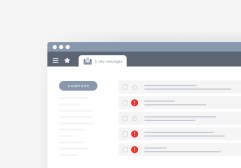Understanding Market Dynamics Through a Simple SWOT Analysis in Startups
In the fast-paced world of startups, understanding your position within the market can be a game changer. One effective tool for this is the SWOT analysis, which stands for Strengths, Weaknesses, Opportunities, and Threats. Conducting a simple SWOT analysis can provide invaluable insights into your business strategy and market dynamics that can guide your decision-making process.
What is a SWOT Analysis?
A SWOT analysis is a strategic planning technique used to identify and evaluate the internal and external factors that could impact your startup’s success. By categorizing these factors into four quadrants—Strengths, Weaknesses, Opportunities, and Threats—you gain a clearer picture of where you stand in relation to your competitors and market conditions.

Step 1: Identify Your Strengths
Start by listing out the strengths of your startup. These are internal characteristics that give you an advantage over competitors. Consider aspects like unique technology, skilled personnel, strong brand recognition, or exclusive partnerships. This step is critical as it helps you recognize what makes your business stand out.
Step 2: Acknowledge Your Weaknesses
Next up are weaknesses—internal characteristics that may hinder your performance or competitiveness in the market. Be honest during this evaluation; common weaknesses include limited resources, skills gaps within the team, or lack of brand awareness. Understanding these areas provides an opportunity for improvement.
Step 3: Explore Opportunities
Moving on to opportunities involves identifying external factors that could benefit your startup’s growth potential. Look for trends in consumer behavior or emerging markets where demand exists but isn’t fully met yet. Collaborations with other businesses or leveraging new technologies are also valuable opportunities worth considering.
Step 4: Assess Threats to Your Startup
Lastly, consider any threats posed by external challenges such as competition from established players or changes in regulations affecting your industry. Economic downturns and changing consumer preferences can also impact viability over time. Recognizing these threats allows startups to develop strategies to mitigate risks effectively.
By conducting this simple SWOT analysis regularly as a part of strategic planning processes at various stages of growth, startups can remain agile in adapting their strategies according to shifting market dynamics. This proactive approach not only helps clarify current positions but also aids in future decision-making aimed at sustainable growth.
This text was generated using a large language model, and select text has been reviewed and moderated for purposes such as readability.











